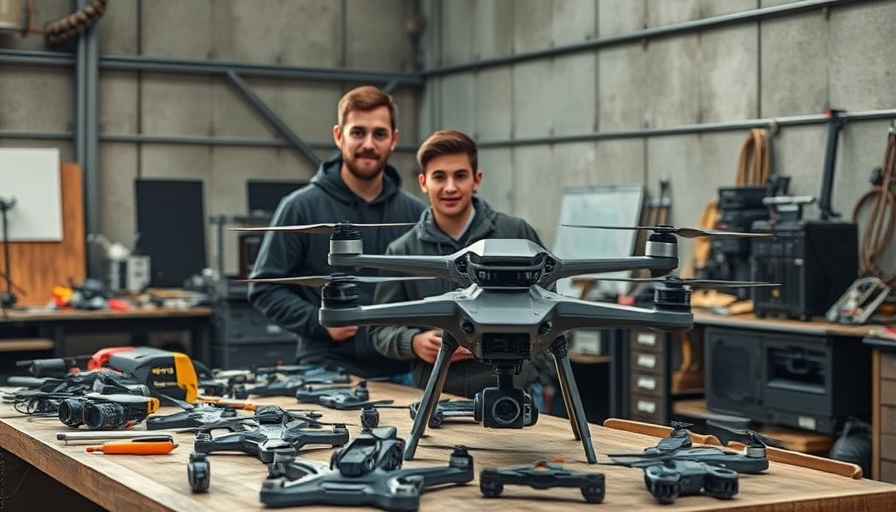
The Unforeseen Lessons from a Viral Tweet
The recent success of a startup named Theseus underscores the power of social media in launching innovative technologies, particularly in the defense sector. Founded by Ian Laffey, Sacha Lévy, and Carl Schoeller, the company gained significant traction after a single tweet demonstrated their creation: a cost-effective drone capable of GPS-free navigation using just a camera and Google Maps. This development addresses a growing concern among military operations, especially evident in environments like Ukraine where GPS jamming can severely impair drone functionality.
Navigating Challenges in Military Technology
Theseus is not alone in the burgeoning drone industry that's been making waves in defense tech. Companies like Skydio and Shield AI also leverage cutting-edge technology to enhance military capabilities. However, as crucial as these drones are, they face the challenge of high-tech jamming systems, compelling innovations that ensure operational efficiency in adverse conditions. The focus of Theseus's technology is on the essential hardware and software components to facilitate drone autonomy, which represents a significant shift towards more reliable operational methods.
Potential Risks of Rapid Growth
Although Theseus has achieved remarkable milestones—landing a spot in Y Combinator and receiving $4.3 million in seed funding—the startup remains cautious. CEO Schoeller emphasized that their early efforts have led to notable interest from U.S. Special Forces, yet they have not secured any military contracts. This highlights the importance of thorough testing and validation in defense contracts. Engaging with the military does present unique challenges, such as navigating bureaucratic processes while demonstrating that their innovations meet stringent operational standards.
Future Trends in Defense and Healthcare
The intersection of defense technology and healthcare innovations could provide significant opportunities. Solutions akin to Theseus's technology may eventually find applications in medical fields, such as delivering supplies to remote areas without GPS. This emerging trend suggests that young tech innovators can adopt cross-sectoral thinking to use their creations in diverse roles, ultimately enhancing efficiency and efficacy across multiple domains.
Keeping abreast of trends like Theseus's and their implications offers healthcare IT professionals insights into the future potential for technologies initially aimed at military use but applicable to healthcare settings. Such understanding fosters an environment ready to adapt, innovate, and ultimately serve the diverse needs of communities in critical situations. Exploring these intersections is vital for healthcare professionals who must navigate increasingly complex technological landscapes in their fields.
 Add Row
Add Row  Add
Add 




Write A Comment